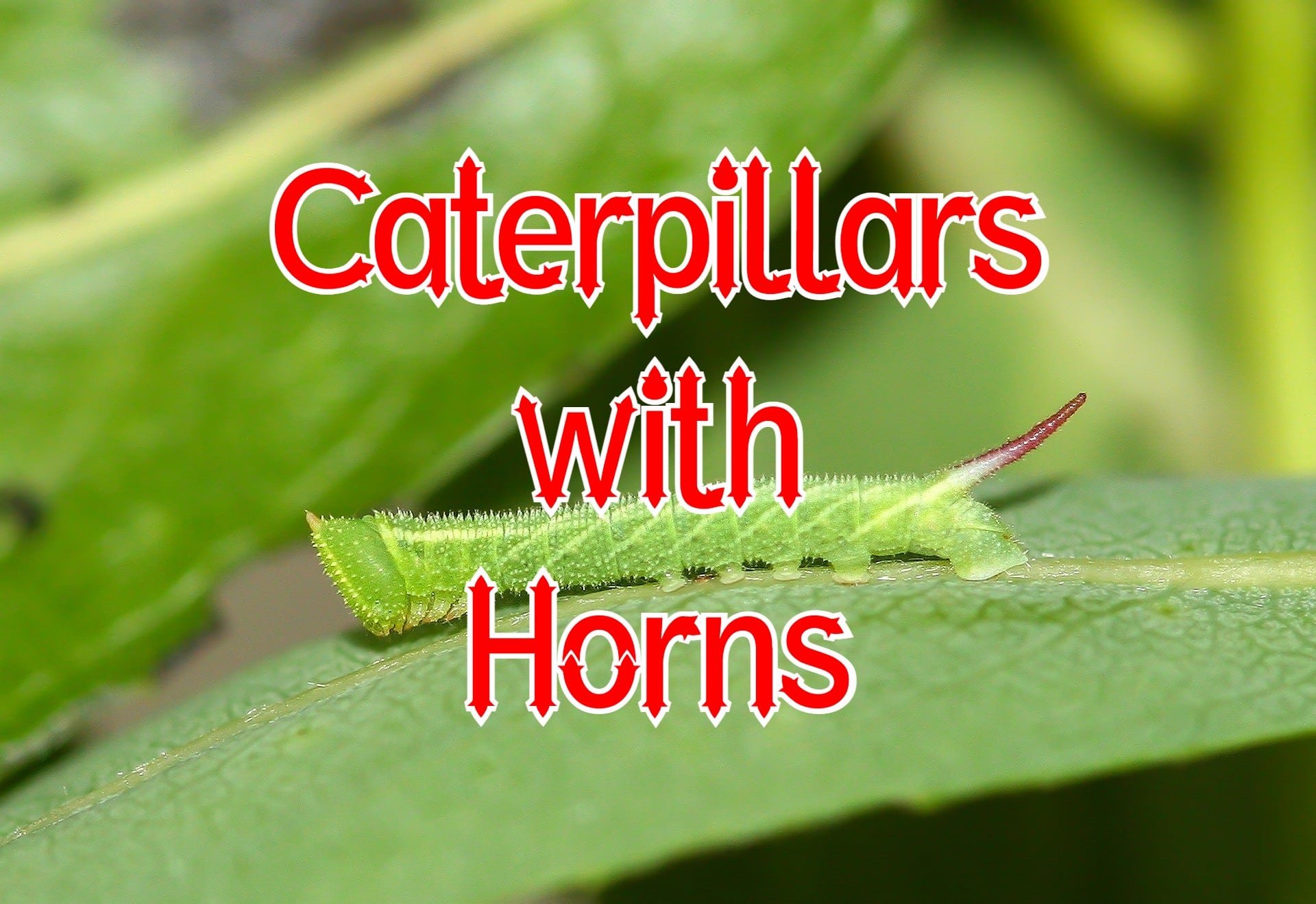Caterpillars with horns are a fascinating group of insects From tomato hornworms munching away in gardens to regal moth caterpillars in forest habitats, horned caterpillars come in a variety of shapes, sizes, and colors Their horns serve important functions, from defense to mimicry. Let’s take a closer look at caterpillars with horns.
Why Do Some Caterpillars Have Horns?
Horns in caterpillars serve two main purposes
Defense Against Predators
Many caterpillar horns function to scare or startle potential predators. The horns may be brightly colored, oddly shaped, or arranged in strange patterns to deter birds and other animals from making a meal of the caterpillar. Horned saddleback caterpillars even have venomous spines on their horns to provide an extra level of defense.
Mimicry
Some caterpillars’ horns are designed to make the insect look like something else entirely. For example, the horned spanworm uses twig-like horns to mimic harmless plant debris. Bird-dropping mimicry is another common caterpillar survival strategy, with species like the red-spotted purple caterpillar using horn arrangements to resemble less appetizing substances.
27 Common Caterpillars with Horns
North America is home to a wide variety of horned caterpillars. Here are 27 of the most frequently encountered species:
1. Monarch Caterpillar
The monarch caterpillar is easily recognized by its banded black, white, and yellow stripes. It has a single pair of long, black horns at its hind end. Monarchs feed exclusively on milkweed plants.
2. Tomato Hornworm
As the name suggests, this large green caterpillar has a prominent horn at its rear end. It is a common pest of tomato plants and tobacco.
3. Tobacco Hornworm
Closely related to the tomato hornworm, this species has white diagonal lines on its sides. Its single horn varies in color from black to red. Tobacco is its preferred host plant.
4. Pipevine Swallowtail Caterpillar
Red, orange, or black forms of this caterpillar have small horns that develop as they mature. They feed on pipevine plants.
5. Regal Moth Caterpillar
This aptly named species has four large orange horns with black tips on its thorax. It is one of the largest caterpillars in North America, reaching over 5 inches long.
6. Rosy Maple Moth Caterpillar
The green larvae of the rosy maple moth have two short black horns behind the head. They feed in groups on the leaves of maple trees.
7. Pink-Spotted Hawkmoth Caterpillar
This caterpillar has small pink spots between its diagonal green stripes. A single small horn occurs at the end of its body. It feeds on cherry, almond, and other trees.
8. Elephant Hawkmoth Caterpillar
This species has two blue horn-like protrusions on its posterior end. Its body is brown and gray with colorful eye spots.
9. Horned Spanworm
Aptly named, this caterpillar uses numerous small horns to mimic harmless debris on branches of fir trees and pines.
10. White-Lined Sphinx Caterpillar
Slanted white stripes characterize this green caterpillar with one tail-like horn. It feeds on leaves of elm, apple, tomato, and other plants.
11. Rustic Sphinx Caterpillar
Similar to the white-lined sphinx, this species has a single horn on its hind end. Look for its green body with red dorsal markings.
12. Soldier Caterpillar
This monarch look-alike has six long black horns. Three horn pairs occur on its head, middle, and rear end. It feeds on milkweed.
13. Saddleback Caterpillar
Green with a brown patch on its back, this caterpillar has two horns with venomous spines. It feeds on trees and garden plants.
14. Orange-Tipped Oakworm
This caterpillar has black head horns and a striped orange and black body. It can defoliate oak trees when present in large numbers.
15. Zebra Longwing Caterpillar
Unlike most species, this caterpillar has a white body with long black horns covering it entirely. It feeds on passionflower vines.
16. Dragon-Headed Caterpillar
True to its name, this species has four distinct horns on its head resembling a dragon. Its body has green and white bands.
17. Pine Devil Caterpillar
Found on pine trees in the eastern U.S., this gray or brown caterpillar has many small horns down the length of its body.
18. Pawpaw Sphinx Caterpillar
On pawpaw trees, look for this green caterpillar with white stripes and a single black tail horn.
19. California Sister Caterpillar
Up to twelve pairs of yellow or orange horns occur on this caterpillar’s green body. It feeds on oak leaves.
20. Waved Sphinx Caterpillar
Multiple wavy yellow lines decorate this caterpillar with red horns and legs. It is found on ash and oak.
21. Honey Locust Moth Caterpillar
This species has six long black thoracic horns as a young larva. The horns turn red as it matures.
22. Queen Caterpillar
With six long black horns on its banded yellow and black body, this milkweed feeder mimics the monarch.
23. Tersa Sphinx Caterpillar
This caterpillar has a tapering gray horn at its rear end. Look for it on plants like moonflower and jasmine.
24. Spiny Oakworm
The orange or brown body of this species features numerous small black horns. It feeds on the leaves of oak trees.
25. Red-Spotted Admiral Caterpillar
Bird droppings mimicry allows this horned caterpillar with a white, brown, and tan body to avoid predators.
26. Ruddy Daggerwing Caterpillar
Orange and black horns sprout from this caterpillar’s brightly colored body. It feeds solely on fig leaves.
27. Saddled Prominent Caterpillar
Feeding on tree and shrub leaves, this green caterpillar has two short yellow horns on its posterior end.
In Closing
The myriad horns and spines of caterpillars showcase the endless creativity of evolution. While each horn has an important purpose, appreciating the diversity and beauty of these insects is reward enough for taking a closer look. What other fantastic horned caterpillars can you find exploring the natural world?

Ask Your Gardening Question
If you’re unable to find the information you need, please submit your gardening question here:
Latest from Wisconsin Yard & Garden




Bizarre Green Caterpillar With Horns
FAQ
What kind of caterpillar has a horn?
Hornworms are among the largest of all caterpillars found in Colorado, some reaching lengths of three inches or more. Characteristically they sport a flexible spine (“horn”) on the hind end, although in some species this is lost and replaced with an eyespot marking.
Are hornworms harmful?
Despite their spiky tails, hornworms are harmless to humans. The easiest and safest way to control them is to remove them by hand, dropping them into a pail of soapy water. (The soap clogs up their spiracles so they’re unable to breathe, which kills them fairly quickly.)
How did I get hornworms?
A tomato hornworm is the larva of a hawk moth, also called a hummingbird moth. The moths emerge from the soil in late spring or early summer, then lay their eggs singly on the undersides of a host plant’s leaves. The tiny caterpillars hatch in about a week and quickly grow as they feed.
Are hornworms invasive in the US?
-
Native to North America:Both tomato hornworms (Manduca quinquemaculata<<!/nav>) and tobacco hornworms (Manduca sexta<<!/nav>) are native to North America and can be found from northern Mexico to the southernmost region of Canada.
-
Not Invasive:They are not introduced species that have spread from other regions and caused harm to native ecosystems.
-
Common Garden Pests:While not invasive, they are known as garden pests because they can cause significant damage to solanaceous plants, including tomatoes, eggplants, peppers, and potatoes.
-
Wide Distribution:Tomato hornworms are found throughout North America, though they are uncommon in the Southeast, where they are often replaced by the tobacco hornworm.
-
Damage:Hornworms feed on blossoms, leaves, and fruit, and at high populations, they can extensively defoliate plants and scar the fruit.
-
Management:Physical removal is usually the only necessary management for hornworms.
Do some caterpillars have horns?
Having horns is just one identifying feature of some caterpillars. Other types of caterpillars can be hairy, furry, or striped. Although green caterpillars are the most common type, horned caterpillars can also be black, yellow, or multicolored. Before turning into a moth or butterfly, caterpillars enter the pupal stage where metamorphosis occurs.
What does a horned caterpillar’s horn look like?
The horn of a horned caterpillar is a small black or gray spike pointing out at its tail end. Some species are a dark green type of caterpillar, and these dull-looking caterpillars turn into colorful pink and olive-colored moths.
What colors can horned caterpillars be?
Horned caterpillars can also be black, yellow, or multicolored. Having horns is just one identifying feature of some caterpillars. Other types of caterpillars can be hairy, furry, or striped. Although green caterpillars are the most common type,
What are the different types of horned caterpillars?
We wrote this article to share detailed information about various horned caterpillar types with pictures for easy identification. Examples of horned caterpillars are dragon-headed caterpillars, tomato hornworms, tobacco hornworms, and more. Are Horned Caterpillars Poisonous?
What type of black caterpillar has horns and tiny spikes?
A type of stripy black caterpillar that has horns and tiny spikes is the orange striped oakworm. This caterpillar looks like a large long slug with orange stripes running its length, and it has 2 protruding horns at its head.
What is a horned caterpillar?
Horned caterpillars are the scariest creepy crawlies to humans. These unwanted visitors usually munch on the leaves of trees, shrubs, and ornamental and edible plants in your backyard garden. Here is a list of caterpillars with horns for easy identification.
